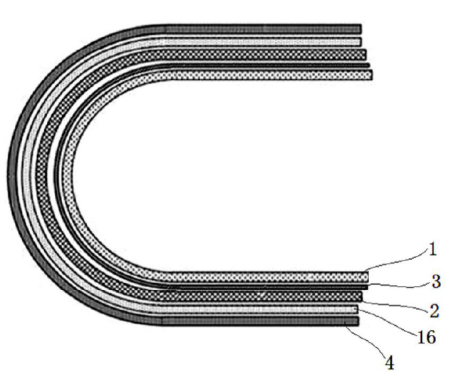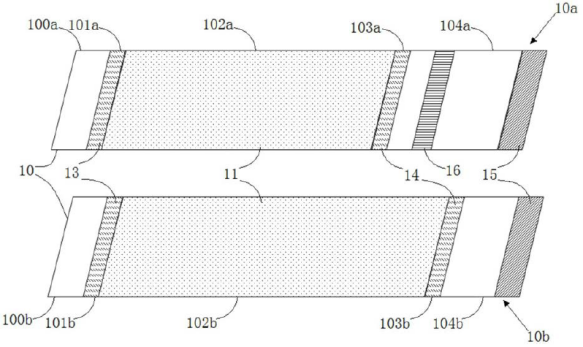To escort lithium-ion battery cells, ATL's technology is worth seeing
Dongguan New Energy's lithium-ion battery cell patent, by adding an isolation protection structure in the cell, can effectively reduce the probability of the aluminum-plastic film being pierced by the anode pole piece.
New Energy Technology (ATL) is the world’s leading producer and innovator of lithium-ion batteries, and its core industries mainly involve lithium-ion batteries, batteries and other fields. Among them, the list of China’s lithium-ion batteries going abroad was released in April 2020. Among them, ATL ranks second and is far behind the third place.
With the development of science and technology, various electronic products emerge in endlessly, and they have almost become an indispensable part of daily life. Lithium-ion batteries have many advantages such as high energy density, long cycle life, environmental friendliness and reproducibility, and they have been widely used. Used in various electronic products.
In the related art, the isolation between the anode current collector and the aluminum-plastic film is generally achieved by an isolation film. As the market requires higher and higher battery energy density, the thickness of materials such as isolation membranes also becomes thinner. However, the existing technology has been difficult to ensure a good isolation effect. Moreover, after the polypropylene layer of the isolation membrane and the aluminum-plastic membrane is pierced, an electrochemical reaction may occur, which may cause liquid leakage and corrosion.
To this end, Dongguan New Energy, a subsidiary of ATL, applied for an invention patent entitled "Battery Cells and Lithium Ion Batteries Using Cells" at the end of 2015 (application number: 201810433670.0), and the applicant was Dongguan New Energy Technology Co., Ltd.
This patent provides a battery cell and a lithium ion battery using the battery cell, which can effectively reduce the probability of the aluminum-plastic film being pierced by the anode pole piece.

Figure 1 Schematic diagram of the structure between the lithium ion battery cell spacers
This patent provides a lithium ion battery cell, as shown in FIG. 1, which is mainly composed of a cathode electrode piece 1, an anode electrode piece 2, an isolation film 3, and an aluminum plastic film 4. Among them, the cathode pole piece 1, the anode pole piece 2 and the isolation film 3 are wound to form a bare cell, and the aluminum-plastic film 4 is used to wrap it on the outside.

Figure 2 Schematic diagram of the side structure of the cathode pole piece
The cathode electrode piece 1 includes a cathode current collector 10, an active material layer 11, a cathode lug 12, a head protective glue 13, a tail protective glue 14, a finishing glue 15, and an anti-piercing cushion layer 16, as shown in FIG. The cathode current collector 10 generally uses aluminum foil, and the two main sides facing away from each other are the first side 10a and the second side 10b, respectively.
Different areas on the cathode current collector 10 carry different functions. When the bare cell is wound, the exposed head area 100 and the adhesive area 101 are in the central area of the bare cell. Therefore, the cathode tab 12 and the cathode current collector 10 are connected to the area in the adhesive area 102 of the head. The material layer 11 covers the surface of the coating area 102 for participating in electrochemical reactions and generating electrical energy. The head protective glue 13 and the tail protective glue 14 can be used to protect the active material layer 11 from both sides.
After winding to form a bare cell, the anode pole piece 2, the isolation film 3 and the cathode pole piece 1 are stacked, and the first side 10a faces the isolation film 3. The outer side of the bare cell is covered by a finishing glue 15 and a part of the tail exposed area 104b are formed together, and at this time, the tail portion of the cathode current collector 10 is glued to the exposed area 104b of the tail portion to be fixed by the tailing glue 15.
The puncture-proof cushion layer 16 is connected to the tail exposed area 104a or 104b and extends along the width direction of the cathode current collector 10. The position of the puncture-proof cushion layer 16 can be determined according to the width of the anode current collector, but it must be When wound to form a bare cell, the puncture-proof cushion layer 16 can at least be outside one of the two corners of the anode current collector at the top and bottom of the bare cell, so that the corner of the anode current collector and the aluminum-plastic film 4 A protective isolation structure is formed between.
The above is the introduction of Dongguan New Energy's patent on lithium-ion battery cells. In the lithium-ion battery cells, a protective isolation structure is added. Due to the existence of this layer structure, when the isolation membrane 3 is pierced by the anode current collector, The anode current collector can still be blocked by the puncture-proof cushion layer 16 and cannot directly contact the aluminum plastic film 4, thus reducing the probability of the aluminum plastic film 4 being punctured.
As a new power source for the future battlefield, lithium-ion batteries will inevitably require the innovation and progress of battery cell technology for their follow-up development. Dongguan New Energy, as a company dedicated to the field of lithium-ion battery cells, will eventually shoulder the heavy responsibility.





